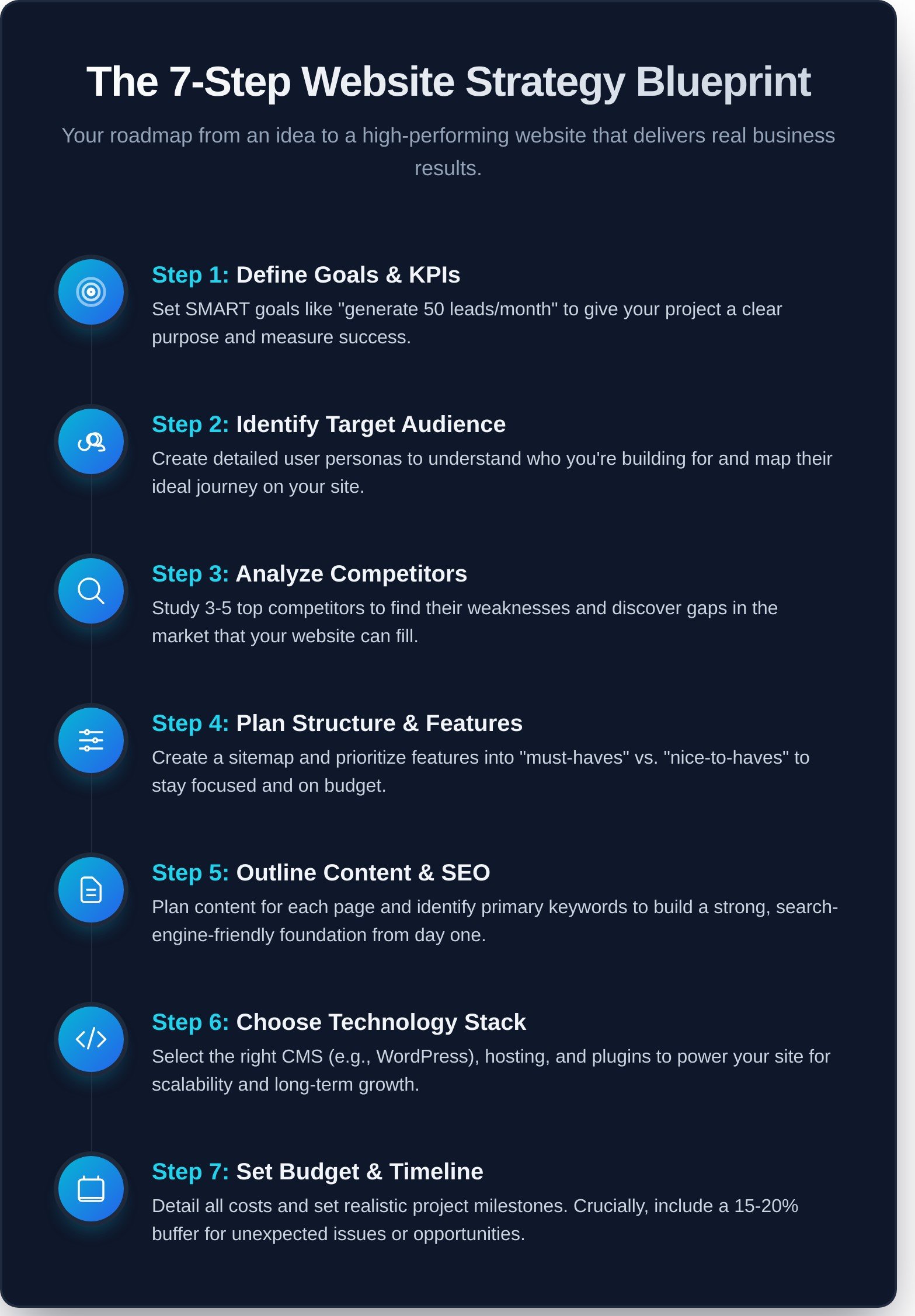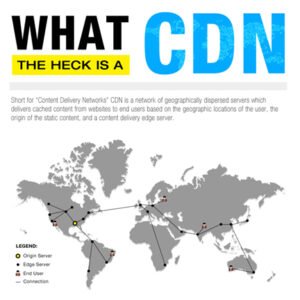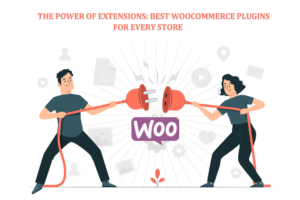Are you thinking about building a new website? Before you dive into designs and code, there’s one critical step you can’t afford to skip: creating a website development strategy. This guide will teach you how to craft a powerful strategy from scratch, ensuring your project launches on time, on budget, and delivers REAL business results. Let’s get started!
What Is a Website Development Strategy (And Why You ABSOLUTELY Need One)
So, what exactly is a website development strategy? Simply put, it’s your master plan for building a successful website. It’s the architect’s blueprint you create before construction begins. This plan defines your goals, identifies your audience, and maps out the exact path to get you from an idea to a fully functional, high-performing website. It removes the guesswork and replaces it with a clear, actionable roadmap.
The High Cost of NOT Having a Strategy
Jumping into development without a strategy is a recipe for disaster. You risk wasting enormous amounts of time and money on unnecessary features that don’t serve your audience. Projects often get bogged down in endless revisions, leading to “scope creep” and completely missed launch deadlines. Worst of all, you could end up with a final website that looks nice but fails at its primary job: attracting customers and generating leads for your business.
Key Ingredients of a POWERFUL Website Strategy
A truly POWERFUL website strategy is built on a solid foundation. It must include clear business objectives and measurable Key Performance Indicators (KPIs) so you know what success looks like. It requires a deep, almost obsessive, understanding of your target audience—who they are, what they need, and what problems you can solve for them. Finally, it demands a solid plan for your content, website features, and the technology that will power it all.
The 7-Step Website Development Strategy Blueprint
Ready to build your plan? Follow these seven steps to create a rock-solid strategy for your next website project. This is the exact process we use at WPWebsmartz to guide our clients to incredible success, and now we’re sharing it with you.
Step 1: Define Your Business Goals & KPIs
Every great strategy starts with the WHY. What, specifically, must this website achieve for your business? Don’t settle for vague goals like “get more traffic.” Instead, set SMART goals (Specific, Measurable, Achievable, Relevant, Time-bound). For example, your goal could be to “generate 50 new qualified leads per month through the contact form” or “increase online sales of Product X by 20% in the next quarter.”
Step 2: Identify Your Target Audience
You can’t build a successful website if you don’t know who you’re building it for. Get incredibly specific about your ideal customer. Create simple user personas that outline their demographics, job titles, challenges, and pain points. Once you know who they are, you can map out their ideal user journey on your future site, ensuring every click leads them closer to a solution.
Step 3: Analyze Competitors & Your Market
You aren’t operating in a vacuum. Make a list of your top 3-5 competitors and perform a thorough analysis of their websites. What are they doing exceptionally well? Where are their obvious weaknesses? Look for gaps in the market that you can fill. This analysis will reveal opportunities to make your website stand out and provide unique value that your competitors are missing.
Step 4: Plan Your Website Structure & Features
Now it’s time to plan the nuts and bolts. Start by creating a sitemap—a simple list or diagram of all the pages you’ll need (e.g., Home, About, Services, Blog, Contact). Next, prioritize your website’s features. Separate the absolute “must-haves” from the “nice-to-haves” to keep your project focused and on budget. Think about the user flow and how people will navigate from one page to another in the most intuitive way possible.
Step 5: Outline Your Content & SEO Foundation
A beautiful website is useless without great content. For each page in your sitemap, outline the key information it will contain. At the same time, start thinking about Search Engine Optimization (SEO). Identify the primary keywords and phrases you want each page to rank for in Google. Plan your blog content calendar to create articles that attract your target audience and answer their most pressing questions.
Step 6: Choose Your Technology Stack (Hint: WordPress is KING)
The technology you choose will be the engine of your website. We believe WordPress is the most powerful and flexible Content Management System (CMS) on the planet, offering unmatched scalability and ease of use. You’ll also need to consider your web hosting provider, essential plugins for functionality (like contact forms and SEO), and any third-party integrations you might need (like a CRM or email marketing service). Ensure your tech choices support your long-term business goals.
Step 7: Set a Realistic Budget & Timeline
Finally, you need to address the practicalities of budget and time. Break down all the potential costs associated with the project: design, development, content creation, and ongoing maintenance. Create a high-level project timeline with key milestones for each phase. Pro tip: always include a buffer of 15-20% in both your budget and timeline to account for unexpected issues or opportunities that may arise.

Strategy in Action: From Blueprint to LAUNCH
Congratulations! Your strategy is complete. This document is now your guide through the entire development process. With this blueprint in hand, you’re ready to move forward with confidence and build a website that truly performs.
How Your Strategy Guides Design & Development
Your strategy isn’t just a document that sits on a shelf. The sitemap and user flow directly inform the creation of wireframes and visual design mockups. Developers will use your prioritized feature list to build a functional, efficient website. Having a clear content plan makes the development process faster and smoother for everyone involved, eliminating confusion and costly rework.
Launch, Measure, and IMPROVE
Remember, launching your website is just the beginning, not the end. Once live, it’s time to start tracking your progress. Use tools like Google Analytics to monitor the KPIs you defined in Step 1. Pay attention to user behavior, conversion rates, and traffic sources. The data you collect will reveal what’s working and what isn’t, allowing you to continuously update and optimize your site for even better results.
Need an Expert to Execute Your Strategy? WE CAN HELP.
A great strategy needs a great team to bring it to life. If you want to turn your strategic plan into a high-performing, lead-generating machine, you need expert developers who understand your vision. Our team of WordPress experts specializes in turning strategic plans into powerful websites that drive business growth. Let’s build your powerful new website together!
Frequently Asked Questions
What is the first step in creating a website strategy?
The absolute first step is to define your business goals. You must know what you want the website to achieve for your business before you can plan anything else. This provides the “why” behind every subsequent decision.
How much does a website development strategy cost?
The cost can vary. Some agencies charge a separate fee for a “discovery” or “strategy” phase, while others include it in the overall project cost. The investment is always worth it, as it saves you far more money in the long run by preventing wasted effort and costly mistakes.
How long does it take to develop a website from a strategy?
A detailed strategy significantly speeds up the development process. While a simple brochure site might take 4-6 weeks, a complex e-commerce or custom site could take 3-6 months or more. Your strategy provides a clear timeline with defined milestones.
What’s the difference between website strategy and website design?
Strategy is the blueprint; design is the visual execution. The strategy defines the goals, audience, structure, and features (the “what” and “why”). The design phase takes that strategic direction and creates the look and feel, user interface, and overall aesthetic.
Can I create a website strategy myself?
Yes, you can use this 7-step guide to create a solid foundation for your strategy. However, working with an experienced agency can provide valuable insights, identify blind spots, and ensure your strategy is realistic and aligned with the best technical practices.
A well-crafted website development strategy is the single most important factor in the success of your online presence. By following this blueprint, you can move forward with clarity and confidence, knowing you’re building a digital asset that will serve your business for years to come. If you have a project in mind and are ready to build a website that delivers results, we’re here to help. Have a project in mind? GET YOUR FREE QUOTE NOW!















